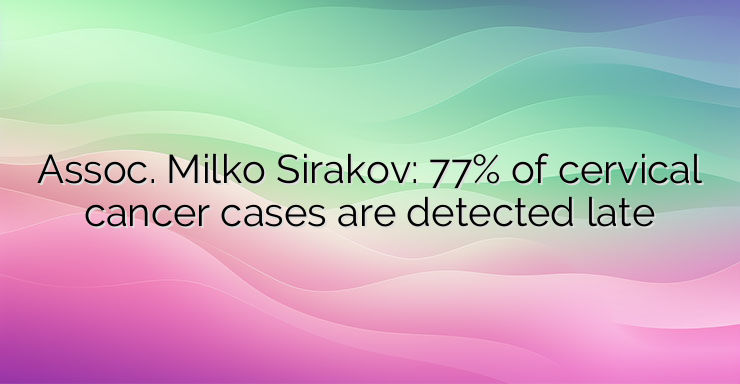Assoc. Dr. Milko Sirakov is the head of the Third Gynecology Clinic at the Mother’s Home Medical University. He has been working at the university hospital since 1978. He is a specialist with many years of experience in the field of pediatric and adolescent gynecology, gynecological endocrinology and infertility. Specializes in France, Germany, Great Britain, Japan. There are 68 publications in Bulgarian and foreign scientific journals. Assoc. Dr. Milko Sirakov is the general secretary of the Bulgarian Society of Obstetrics and Gynecology and the chairman of the Bulgarian Society of Pediatric and Adolescent Gynecology. He was elected as the next president of the European Association of Pediatric and Adolescent Gynecology. What is the incidence of cervical cancer and what are the data for Bulgaria? Over 1,100 new cases of cervical cancer are registered in our country every year. Worldwide, this number is 500,000. It is defined as the second most common cancer in the world among women aged 20-45. Every year, 270,000 women do not survive the disease, i.e. every 2 minutes in the world a woman dies of cervical cancer, in Europe it happens every 18 minutes. In Bulgaria, over 400 women a year do not survive the disease. In Europe, thanks to serious preventive activities, the frequency of the disease is decreasing. In our country, unfortunately, it is increasing. What are the reasons for this increase? At what stage of the disease are most cases diagnosed? The frequency is increasing because the primary screening, which was carried out in our country years ago, is neglected. At that time, every woman received a note from the polyclinic once a year to go for a preventive examination, which included a physical examination, an ultrasound and a mandatory Pap test. Gynecologists received a kind of bonus for performing a certain number of pap smears. This practice, unfortunately, died. Therefore, many more cases are now being detected at an advanced stage. A low percentage are diagnosed in an early phase, up to the “carcinoma in situ” stage – the fourth degree on smears. At this stage, there is still no penetration of cancer cells under the basal layer of the membrane, i.e. this is the time when the treatment is carried out only by excision of the affected part of the neck. The uterus is not removed, no radiotherapy is given. And the cure is 100%. Unfortunately, only about 23% in our country reach this level, the remaining 77% are already in an invasive, advanced stage. Now, it is claimed, more attention is paid to human rights. I.e. a woman has the right to go, she also has the right not to go for a preventive examination. It is important to know that performing a preventive examination with a Pap smear is a necessity, not some kind of trick. In this way, a woman can be pretty sure that she will not develop cervical cancer. NEWS_MORE_BOX Is conducting a pap smear sufficient as a preventive examination? Cytosmears do not give 100% certainty. On the other hand, however, it is not logical for every woman to undergo the more in-depth examinations, such as colposcopy and biopsy. First, the procedure becomes more expensive,second – the biopsy means to “bite off” a piece of the cervix, which is still some kind of injury, an invasive technique. An inflammation or other problem may occur. Therefore, it is necessary to screen the cases. For example, smear groups I and II are a normal result. With III A group means the presence of inflammation, it can be viral, bacterial, fungal. The smear does not say exactly what it is. The cause is sought and treatment is prescribed. Immediately after its implementation, a smear is taken again. If the result is again group III, then colposcopy may already be necessary. In this method, the cervix is viewed with a device such as a microscope (colposcope) and some tests are performed – it is smeared with acetic acid, Lugol’s solution. The normal epithelium of the cervix is stained brown. Some areas do not stain, they are suspicious. A piece is already taken from them for biopsy.


Leave a Reply